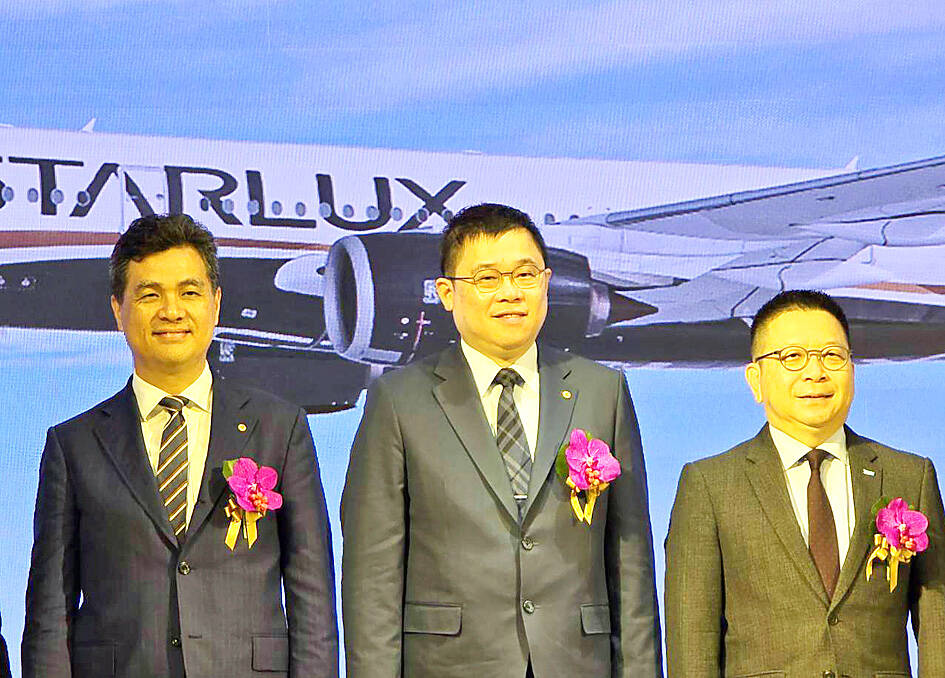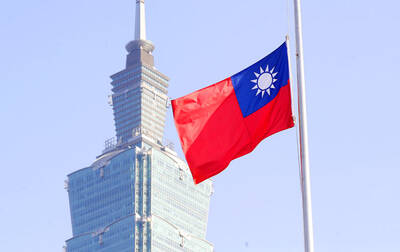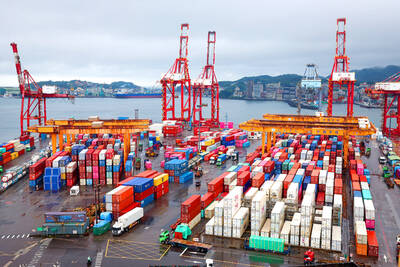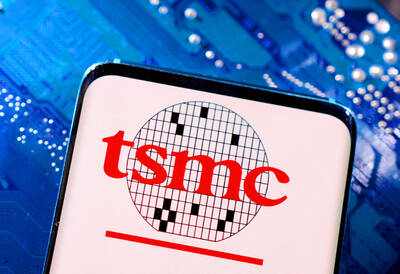Shares of Starlux Airlines Co (星宇航空) surged more than 53 percent on its debut on the Taiwan stock exchange yesterday.
Starlux shares closed up 53.75 percent at NT$30.75 from its initial public offering price of NT$20 after retreating in late trading from a 60 percent rise.
China Airlines Ltd (CAL, 中華航空) rose 0.90 percent to close at NT$22.35, while EVA Airways Corp (長榮航空) gained 0.40 percent to close at NT$37.70.

Photo: CNA
In Taiwan, a newly listed stock is allowed to go beyond the 10 percent maximum increase or decline in its first five trading sessions.
At the listing ceremony, Starlux chairman Chang Kuo-wei (張國煒) said the carrier has entered its second phase of expansion since last month, setting its sights on destinations in Europe.
Starlux is planning to add three destinations next year, covering long-haul and short-haul routes, Chang said.
The airline was looking to increase flights to Los Angeles and Seattle, and had also set its sights on other US destinations such as New York, Dallas and Houston, he said last month.
The carrier is expected to be operating 31 routes to 27 destinations worldwide by the end of this year.
Starlux has a fleet of 24 aircraft, which would increase to 26 after the carrier takes delivery of two A350-900s before the end of this year.
Chang said that the fleet is expected grow to more than 50 planes by 2026, focusing on aircraft geared for the long-haul market.
The next step would be to add more flights out of Taichung and Kaohsiung, he said, adding that the firm would likely add A320 aircraft, boosting the fleet to more than 70, to meet those needs.
Starlux was upbeat about the transit market through Taiwan for passenger and cargo business, he said, highlighting anticipated growth in demand for cargo services to destinations in Southeast Asia and the US.
The company is keen to enter the cargo business and early this year signed an agreement to buy five A350 cargo planes with an option for an additional five, he said.
Starlux was profitable for the first time last year, posting net profit of NT$149 million (US$4.65 million), or earnings per share (EPS) of NT$0.08.
In this first half of this year, its EPS was NT$0.39, up from NT$0.18 in the same period last year.
The airline reported consolidated sales of NT$9.60 billion last quarter, up 58 percent from a year earlier and the highest for any quarter in the company’s history.
To broaden its international reach, Starlux has said it would apply to join the Oneworld global airline alliance before the end of next year.
The Oneworld Alliance has 13 members, including American Airlines, British Airways, Cathay Pacific and Qantas.
It serves more than 900 destinations in 170 territories.

ELECTRONICS BOOST: A predicted surge in exports would likely be driven by ICT products, exports of which have soared 84.7 percent from a year earlier, DBS said DBS Bank Ltd (星展銀行) yesterday raised its GDP growth forecast for Taiwan this year to 4 percent from 3 percent, citing robust demand for artificial intelligence (AI)-related exports and accelerated shipment activity, which are expected to offset potential headwinds from US tariffs. “Our GDP growth forecast for 2025 is revised up to 4 percent from 3 percent to reflect front-loaded exports and strong AI demand,” Singapore-based DBS senior economist Ma Tieying (馬鐵英) said in an online briefing. Taiwan’s second-quarter performance beat expectations, with GDP growth likely surpassing 5 percent, driven by a 34.1 percent year-on-year increase in exports, Ma said, citing government

‘REMARKABLE SHOWING’: The economy likely grew 5 percent in the first half of the year, although it would likely taper off significantly, TIER economist Gordon Sun said The Taiwan Institute of Economic Research (TIER) yesterday raised Taiwan’s GDP growth forecast for this year to 3.02 percent, citing robust export-driven expansion in the first half that is likely to give way to a notable slowdown later in the year as the front-loading of global shipments fades. The revised projection marks an upward adjustment of 0.11 percentage points from April’s estimate, driven by a surge in exports and corporate inventory buildup ahead of possible US tariff hikes, TIER economist Gordon Sun (孫明德) told a news conference in Taipei. Taiwan’s economy likely grew more than 5 percent in the first six months

SMART MANUFACTURING: The company aims to have its production close to the market end, but attracting investment is still a challenge, the firm’s president said Delta Electronics Inc (台達電) yesterday said its long-term global production plan would stay unchanged amid geopolitical and tariff policy uncertainties, citing its diversified global deployment. With operations in Taiwan, Thailand, China, India, Europe and the US, Delta follows a “produce at the market end” strategy and bases its production on customer demand, with major site plans unchanged, Delta president Simon Chang (張訓海) said on the sidelines of a company event yesterday. Thailand would remain Delta’s second headquarters, as stated in its first-quarter earnings conference, with its plant there adopting a full smart manufacturing system, Chang said. Thailand is the firm’s second-largest overseas

Taiwan Semiconductor Manufacturing Co’s (TSMC, 台積電) market value closed above US$1 trillion for the first time in Taipei last week, with a raised sales forecast driven by robust artificial intelligence (AI) demand. TSMC saw its Taiwanese shares climb to a record high on Friday, a near 50 percent rise from an April low. That has made it the first Asian stock worth more than US$1 trillion, since PetroChina Co (中國石油天然氣) briefly reached the milestone in 2007. As investors turned calm after their aggressive buying on Friday, amid optimism over the chipmaker’s business outlook, TSMC lost 0.43 percent to close at NT$1,150